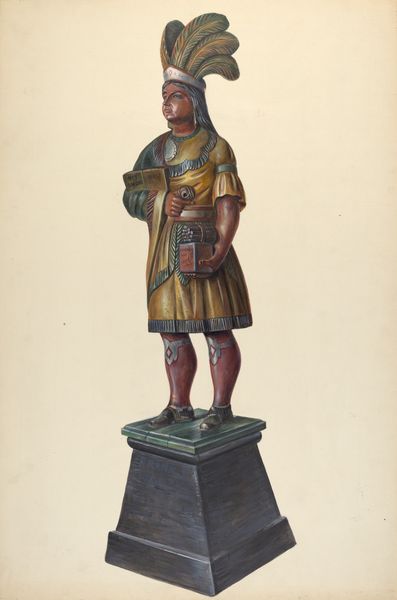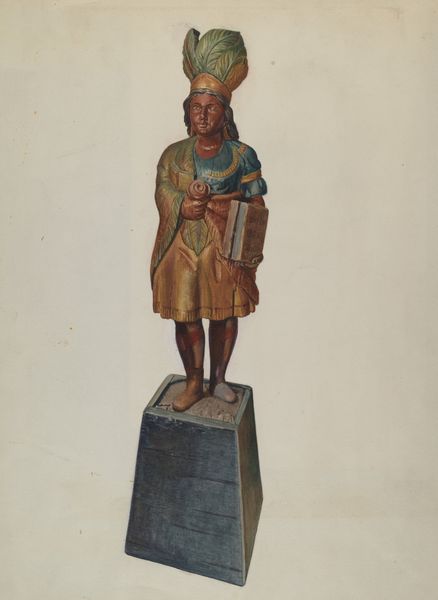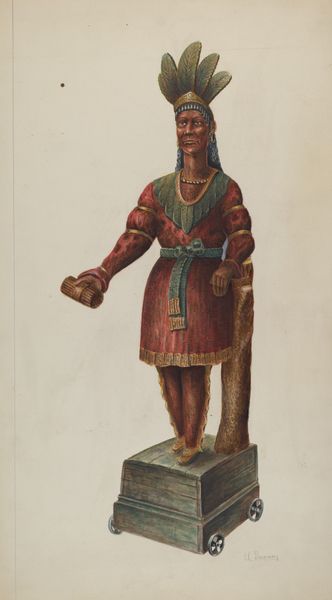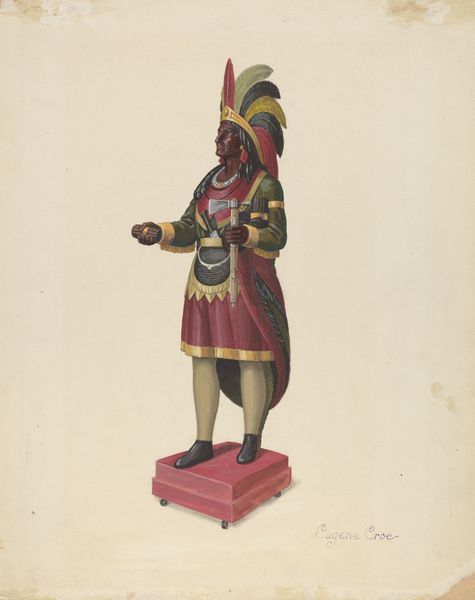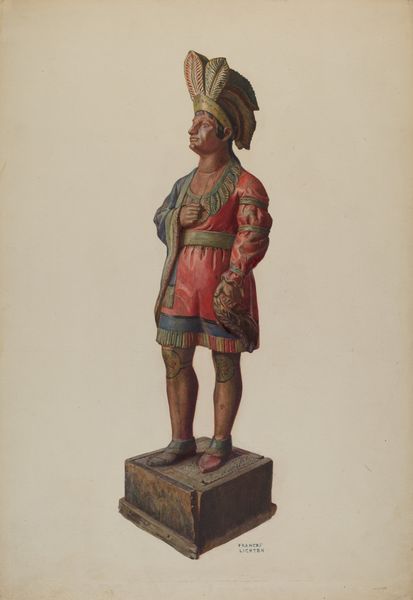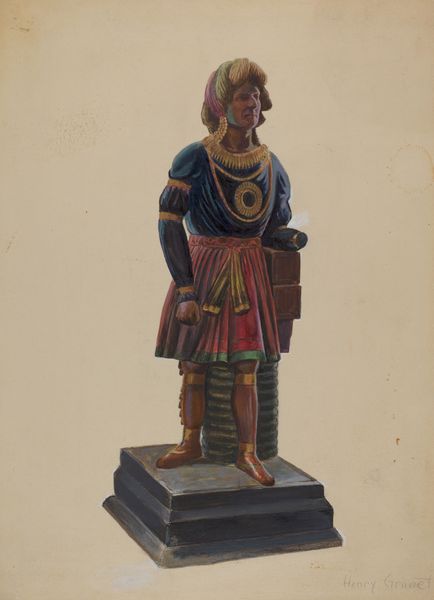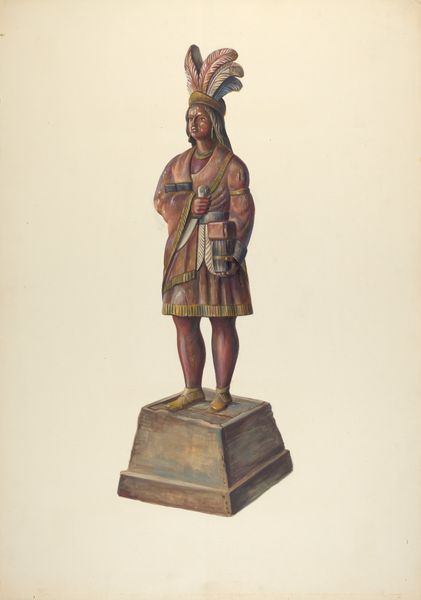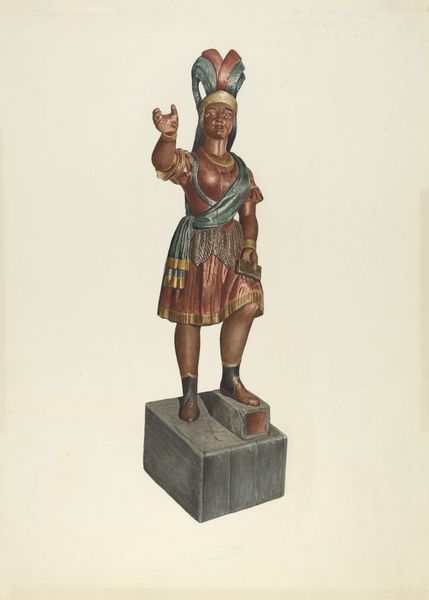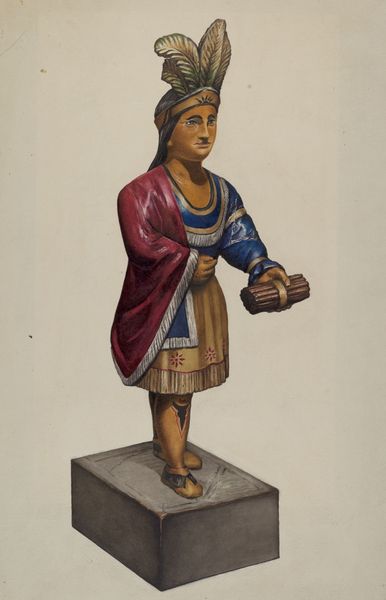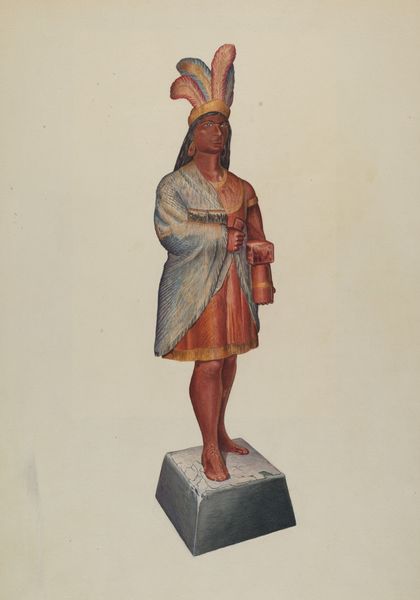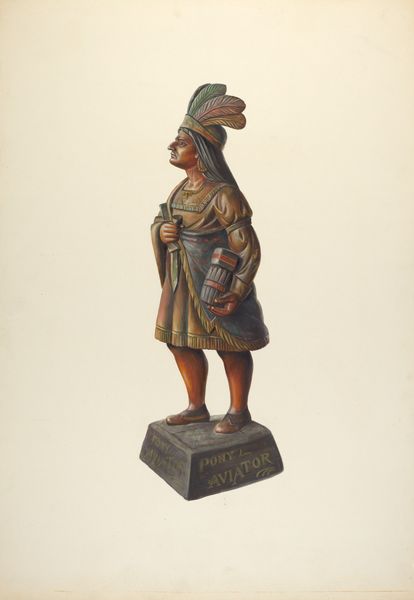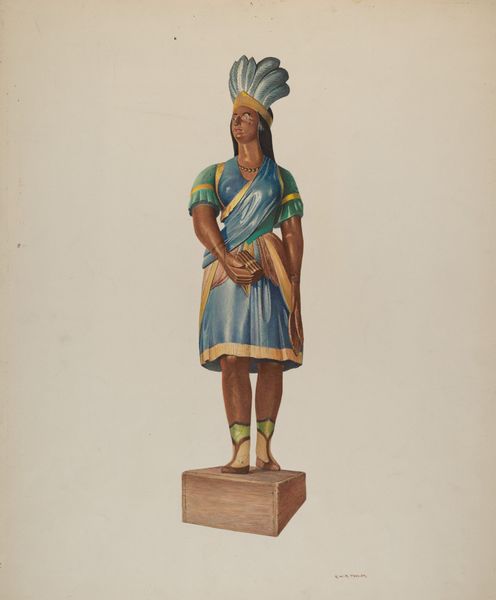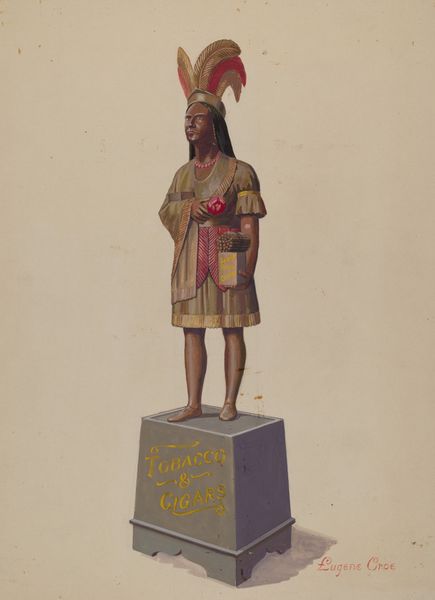
drawing, coloured-pencil
#
portrait
#
drawing
#
coloured-pencil
#
caricature
#
figuration
#
coloured pencil
#
folk-art
#
portrait drawing
#
watercolor
#
realism
Dimensions: overall: 73.1 x 50.8 cm (28 3/4 x 20 in.) Original IAD Object: 48" high; 33" wide
Copyright: National Gallery of Art: CC0 1.0
Curator: This is Walter Hochstrasser’s rendering of a "Cigar Store Indian," dating circa 1937. It’s rendered using coloured pencil on paper, capturing a distinctive figure of Americana. Editor: The stiffness, the muted colour palette…it projects a sense of solemnity, a static monumentality. The geometry is quite intriguing, isn’t it? Curator: Indeed. The "Cigar Store Indian" figure itself has a rich, if complicated, cultural significance. It’s a vestige of a time when these figures stood outside tobacco shops, advertising their wares, often exploiting stereotypical depictions. These carvings appropriated and commercialized indigenous identity for economic gain. Editor: Precisely. Structurally, note how Hochstrasser emphasizes the verticality with stacked geometric forms: the squared base, the cylindrical legs and torso, even the linear fringe detail. This visual ordering lends a sort of faux-Classical gravitas to the caricature. Curator: The headdress is particularly telling; the arrangement of feathers almost reads as a corruption of traditional symbolism—commercialized markers of indigenous status reduced to decorative elements. This, viewed from a modern lens, represents not only cultural appropriation but the obliteration of specific cultural meanings in favor of generic representation. Editor: The colouring also plays into this sense of artificiality. Observe how the umber and sienna tones mimic the expected wood-carved effect, almost as if the coloured pencil work attempts to evoke texture that isn’t there, further distorting the signifiers. Curator: You've nailed it. By using drawing, rather than actually carving wood, the artwork adds another layer of remove, of representation-of-a-representation, intensifying the issues we observe. Editor: Seeing how carefully this has been observed and copied, despite its distortions, makes me consider the original artist more and wonder at their reasons and motives, which could range from genuine respect and understanding of cultural heritage to flagrant caricature. Curator: It serves as a poignant reminder of how images function to preserve narratives – both intentional and unintentional – in our cultural memory. It is a difficult image in many respects. Editor: I leave thinking of this caricature as a meditation of form meeting concept and also of an ironic relationship to object versus rendering and their collective historical significance.
Comments
No comments
Be the first to comment and join the conversation on the ultimate creative platform.
